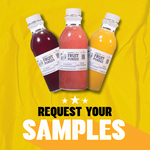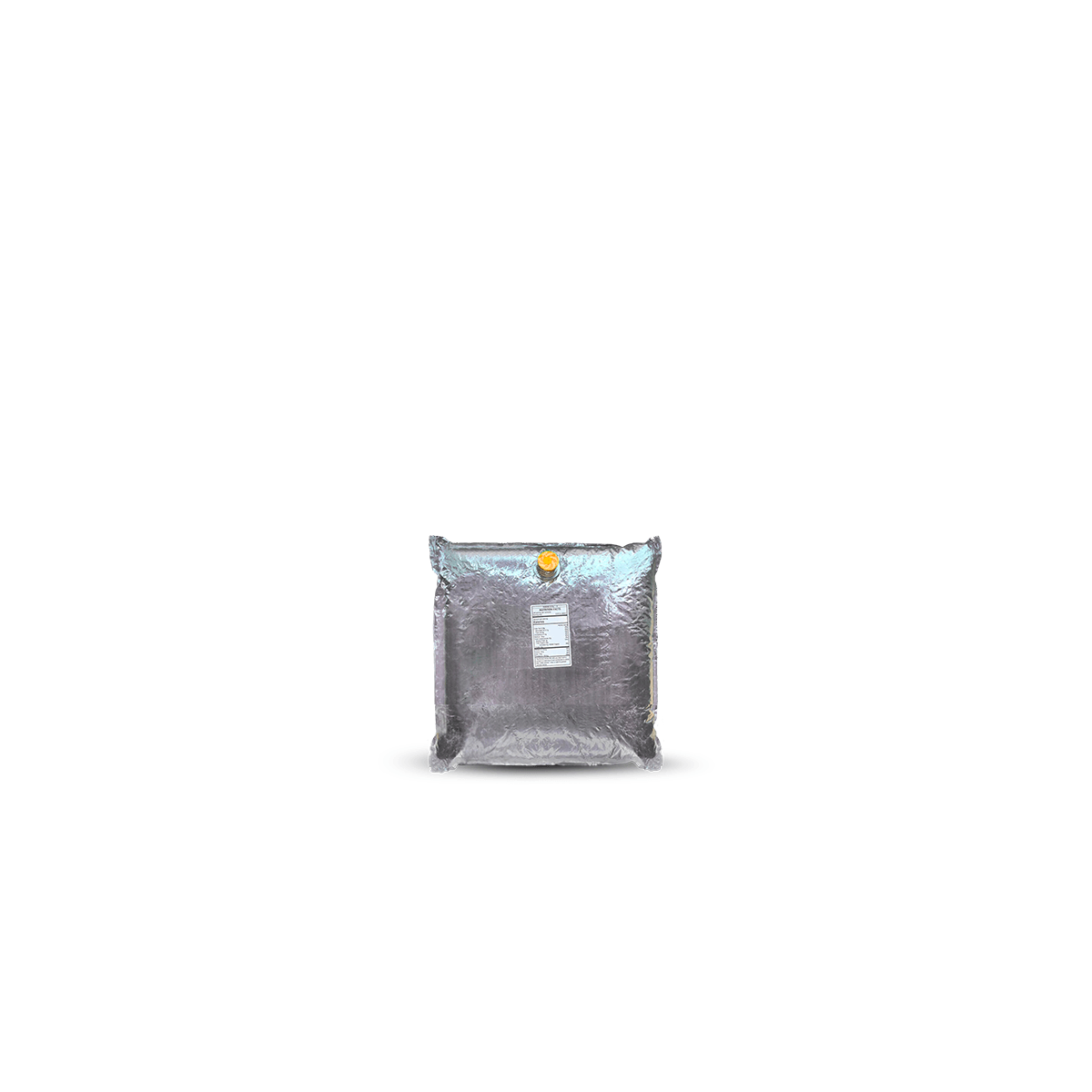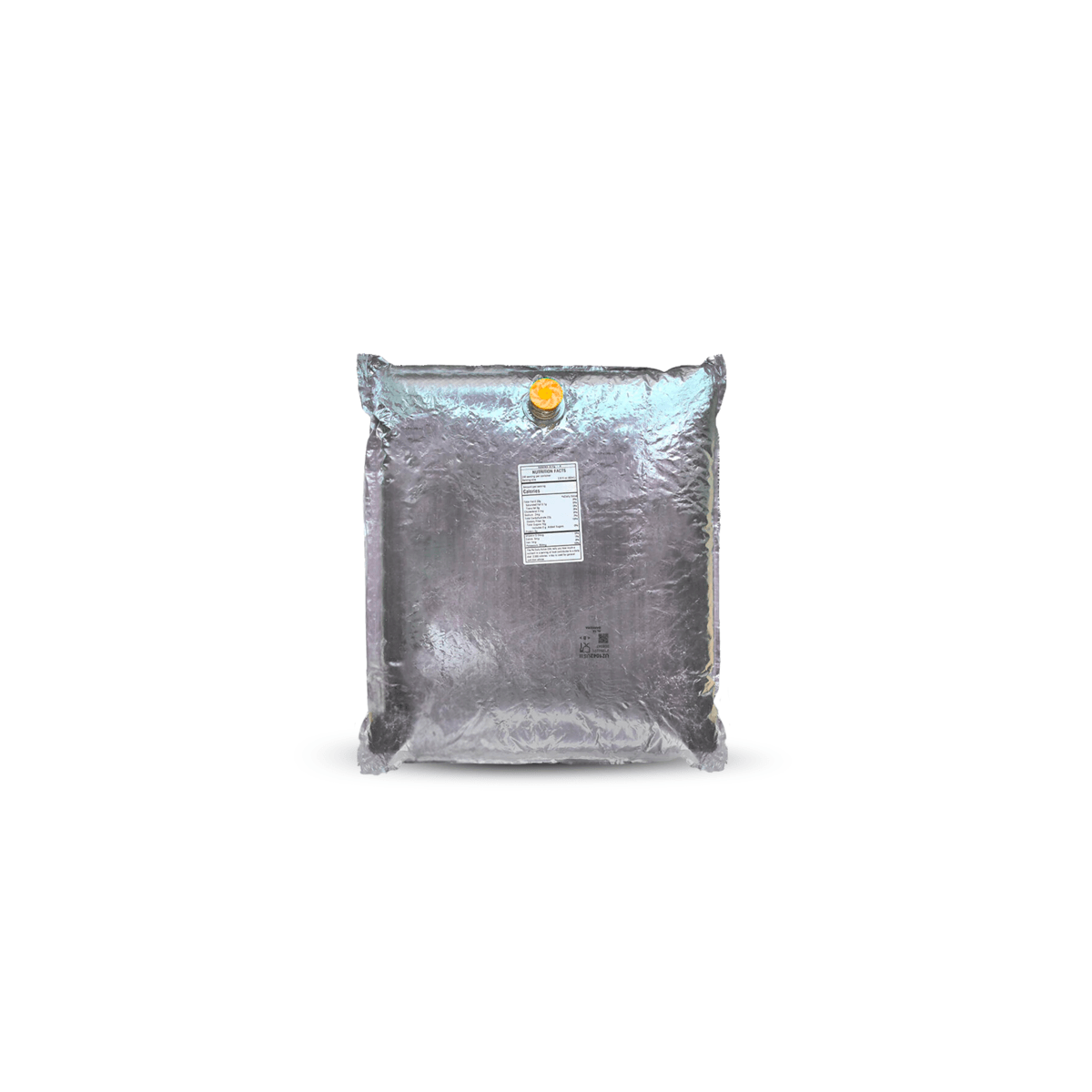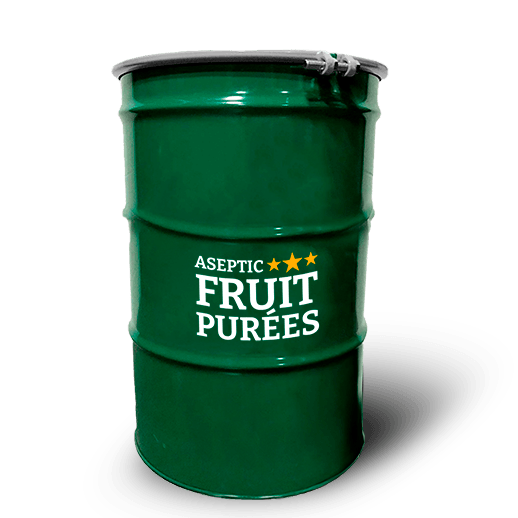1. What’s the difference between aseptic and frozen fruit puree in large-scale production?
Aseptic vs. Frozen: Operational Efficiency
Aseptic fruit purees are pasteurized and packed in sterile, shelf-stable packaging, eliminating the need for refrigeration or thawing. This allows manufacturers to save significantly on cold chain logistics, reduce waste, and improve handling efficiency. Frozen fruit puree, on the other hand, requires consistent freezing, careful thawing schedules, and additional storage space.
Shelf Life and Safety
Aseptic purees typically have an 18-month shelf life when stored below 75°F, maintaining safety without preservatives. Frozen puree may have a comparable shelf life but requires freezing throughout.
Recommendation
For high-throughput production and ingredient consistency, aseptic fruit purees offer a superior ROI.
2. How does fruit puree affect fermentation yield in alcoholic beverages?
Sugar Content and Brix Level
Fruit puree contributes natural sugars that can boost fermentation. However, the outcome depends on the fruit's Brix level. For instance, mango puree and passion fruit puree are rich in fermentable sugars, which can increase ABV when added pre-fermentation.
Flavor Retention
Adding puree post-fermentation can enhance aroma and fruit expression, but requires careful timing to prevent contamination. Aseptic purees are ideal for both methods due to their microbiological stability.
3. What is the recommended dosage per gallon/liter in industrial applications?
Brewing and Fermentation
For beer, kombucha, and fruit-forward seltzers, dosage ranges from 0.5 to 2.5 lbs per gallon. Bold flavors like blood orange or pineapple pair well with neutral bases.
Dairy Applications
In yogurts and kefir, 1.5 to 2.5 lbs per gallon of base offers a strong fruit impact while balancing cultures. Flavors like lemon or mango puree enhance both color and taste.
Sauces and Dressings
Purées like raspberry puree and sweet cherry create vibrant sauces with 1–2 lbs per gallon. Their natural pH supports shelf stability.
Infused Beverages and Edibles
For infused drinks and gummies, adjust puree from 0.75 to 3 lbs per batch based on intensity. Passion fruit and pink guava are trending.
Ice Cream and Frozen Desserts
Ideal range: 2 to 3 lbs per gallon for ice cream, sorbets, and soft serve. Mango and pineapple purée ensure tropical impact.
Plant-Based Formulations
In almond or oat milk bases, use 1.5–2 lbs per gallon. Clean-label mango purée and lemon are top choices.
4. Which formats are better for co-packers: BIB vs drums?
Comparing Sizes for Scale
- Bag-in-box (BIB): 44 lb units. Flexible and great for multiple short runs or seasonal flavors.
- Drums (440 - 485 lbs): Ideal for high-volume operations. Efficient for cost and line performance.
Operational Fit
Drums fit better in automated systems. BIBs are perfect for smaller batching needs. Evaluate based on batch size and ingredient usage frequency.
5. Can fruit puree help reduce sugar or additives in clean-label formulations?
Clean Label Benefits
Aseptic fruit purees like mango puree and blood orange offer natural sweetness, body, and visual appeal. This reduces or eliminates the need for high fructose corn syrup, gums, and synthetic dyes.
Real Fruit, Fewer Ingredients
Labels reading “puree, real fruit” resonate more with today's market. Lemon or pineapple puree adds functional acidity and flavor naturally.
6. How do aseptic fruit purees support supply chain stability?
Year-Round Access to Seasonal Fruits
Secure flavors like pineapple or passion fruit via production slot contracting. Avoid shortages and price volatility.
Storage Efficiency
Aseptic packaging means no refrigeration before opening. Save space, reduce energy costs, and simplify cross-border logistics.
7. Are there notable flavor or pH impacts from using fruit puree?
Flavor Innovation
Fruit purees like sweet cherry or strawberry create signature flavor profiles. Mango and lemon add brightness, while berries boost aroma.
pH Balance and Safety
With most fruit purees having pH levels between 3.0–4.2, they support safe, shelf-stable product design—especially in beverages and sauces.
8. What certifications or claims do industrial buyers need to know?
Certifications matter—especially in a B2B environment where trust, traceability, and compliance drive purchasing decisions. Industrial buyers looking for fruit purees should prioritize products that align with current consumer expectations and regulatory standards. At AFP, our aseptic fruit purees are naturally non-GMO, allergen-free, and fully compatible with clean label formulations—meaning no preservatives, no artificial colors, and no hidden ingredients. Whether you're producing for vegan, gluten-free, or kosher markets, our purees fit seamlessly into inclusive product lines. Claims like “real fruit,” “no added sugar,” or “naturally processed” are more than marketing—they’re functional selling points that elevate your product and help it stand out in competitive categories like plant-based, infused beverages, and frozen desserts. Industrial buyers aren’t just sourcing ingredients—they’re building trust with every label.
9. How do real fruits in puree form compare to artificial flavors?
In industrial formulations, using real fruit puree instead of artificial flavors is more than a label claim—it’s a strategic advantage. While artificial flavors may offer cost savings, they lack the complexity, color, and mouthfeel that real fruit delivers. A fruit puree like mango, raspberry, or blood orange adds not only bold flavor but also fiber, body, and natural color that enhances the overall sensory experience. This is especially valuable in applications like frozen desserts, infused beverages, or sauces where texture and authenticity matter. Moreover, fruit purees support clean-label initiatives, reduce the need for stabilizers or dyes, and give your product a competitive edge in a market demanding transparency. Simply put: artificial flavors simulate fruit. Purees are fruit—and customers can taste the difference.
10. Where is the fruit puree market headed?
Market Growth & Trends
The global fruit puree market is expected to surpass $6.5B by 2027, with significant growth driven by clean label trends, plant-based diets, and demand for natural flavoring. Aseptic fruit purees are leading the charge due to their scalability and convenience.
Explore More
Check our latest blog on Plant-Based Yogurt: The Sweet Achiever of Fruit Innovation






